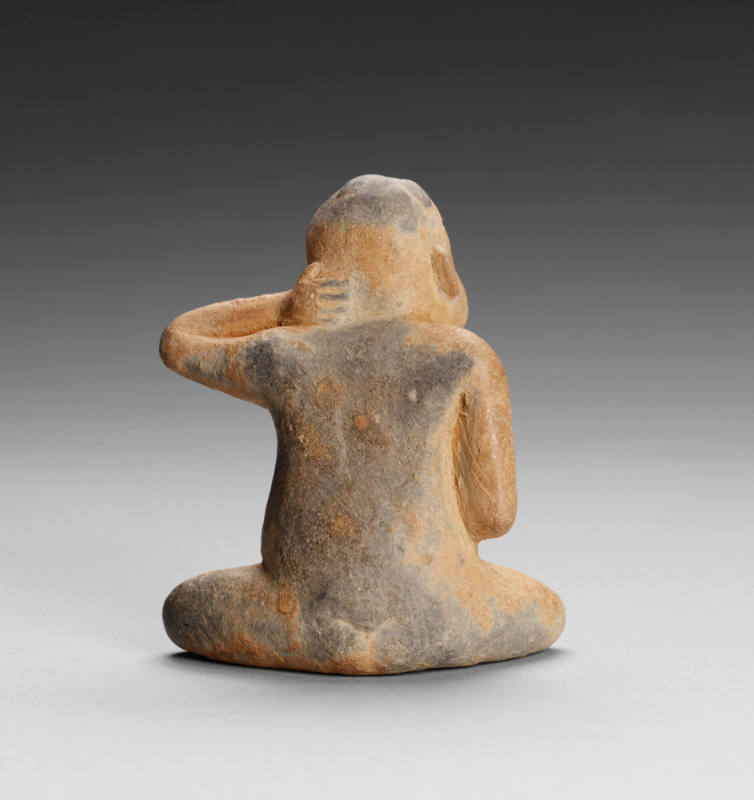


Object Details
Culture
Olmec (Mexico)
Date
ca. 1150–550 BCE
Medium
Ceramic
Dimensions
4 3/4 x 4 1/2 x 3 inches (12.1 x 11.4 x 7.6 cm)
Credit Line
Acquired through the Membership Purchase Fund
Object
Number
70.042
BRIEF DESCRIPTIONThis is an Olmec ceramic figure of a seated boy.WHERE WAS IT MADE?This figurine was(…)
BRIEF DESCRIPTIONThis is an Olmec ceramic figure of a seated boy.WHERE WAS IT MADE?This figurine was made in what is now Mexico.HOW WAS IT MADE?This hollow figure of a boy was likely made by modeling clay directly by hand. Then the clay was fired at a high temperature in an earthen pit.HOW WAS IT USED?The original function of archaeological figurines found in museum collections is uncertain. Today archeologists carefully record information about the associations between artifacts and the circumstances of their burial as they are unearthed, and we can draw many conclusions about object function. However, very few of the archaeological objects found in museums today were excavated in a careful, scientific manner, so we have fewer clues about their past associations and function. Although obviously decorative, figurines could also have been used to make offerings to supernatural powers, to serve as good luck charms, or to accompany the dead as grave goods. There are images of infants being offered as sacrificial victims throughout Olmec art; some surmise that these effigy figures served as surrogates for actual infant victims.WHY DOES IT LOOK LIKE THIS?This Olmec figure of a child is seated, with the figure’s left arm raised behind the head, right arm bent at the elbow with hand in lap (now missing), and the two legs bent at the knee, with feet meeting in front. Rounded figures of babies and children are common motifs in Olmec art, and even depictions of adults often have a rounded, youthful appearance.ABOUT THE OLMEC CULTURE:The Olmec were the earliest Mesoamerican high civilization of interest to most art historians. Many of the characteristics which dominate the later art and archaeology of Mesoamerica—such as ball courts, pyramids, and greenstone carvings—are already found in Olmec material culture. Beginning during the early Formative period, about 1500 BC, the Olmec began constructing major sites along the Gulf Coast area of Mexico, with their core occupation in the region now part of the modern states of Veracruz and Tabasco. The networks of Olmec trade and influence were widespread, however, ranging well-beyond the so-called Olmec “heartland” and extending to Guerrero in the west and Honduras in the southeast. Although Olmec culture lasted until about 400 BC in the heartland, it persisted for several centuries longer in outlying areas, notably the highlands.












